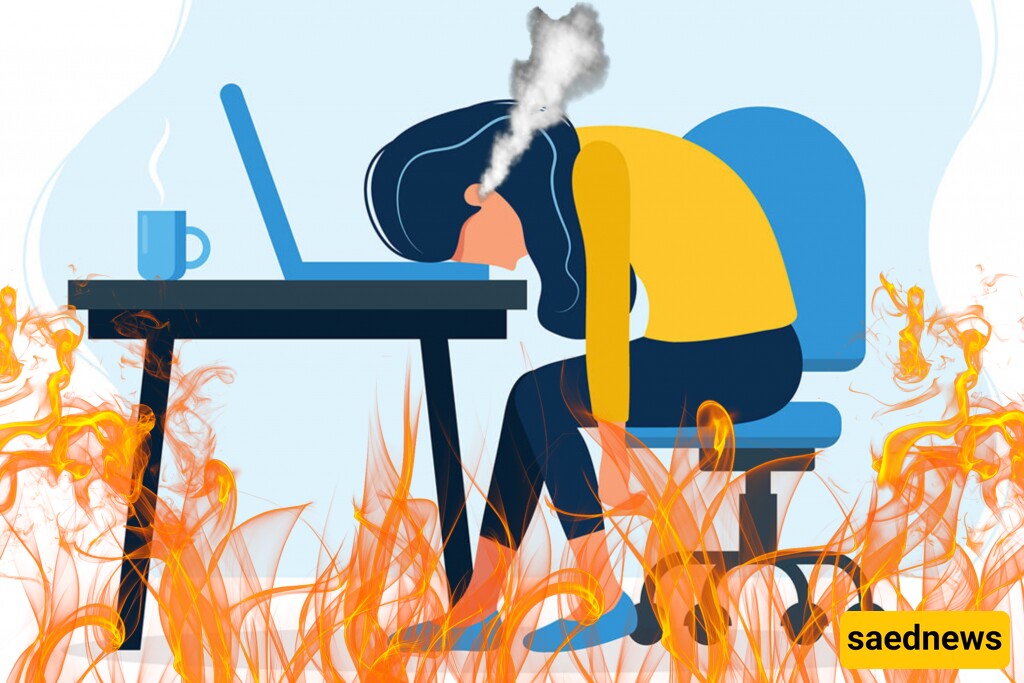SAEDNEWS: Burnout is a growing issue affecting individuals across professions. Understanding its root causes and learning effective strategies to combat it can help restore balance and well-being.

Burnout is a state of physical, emotional, and mental exhaustion caused by prolonged stress, particularly in the workplace. Characterized by feelings of detachment, lack of accomplishment, and overwhelming fatigue, burnout affects both professional and personal lives. Recognized by the World Health Organization as an occupational phenomenon, burnout is not limited to work environments—it can also arise from chronic caregiving responsibilities or intense academic pressures.

An unmanageable workload is one of the most common causes of burnout. When employees are constantly pushed beyond their capacity, they struggle to keep up, leading to fatigue and frustration.
Feeling powerless at work—whether due to rigid policies, micromanagement, or lack of autonomy—can contribute to burnout. A sense of control is crucial for job satisfaction and mental well-being.
A lack of appreciation for one’s efforts can erode motivation. Employees who feel undervalued often disengage, believing their contributions are overlooked.
When professional demands encroach on personal time, it becomes difficult to recharge. Constantly being “on” creates a cycle of stress, leaving little room for self-care.
When an individual’s personal values conflict with their work environment, it can create a sense of disconnection, further exacerbating burnout.
Recognizing burnout early is essential for addressing it effectively. Common signs include:
Chronic fatigue or insomnia.
Decreased productivity or creativity.
Irritability, mood swings, or a sense of hopelessness.
Physical symptoms such as headaches or digestive issues.
Social withdrawal and feelings of isolation.
The first step in overcoming burnout is recognizing and accepting it. Denying the issue often leads to further stress and worsening symptoms.
Restoring physical and mental health is crucial. Engage in regular exercise, maintain a healthy diet, and prioritize sleep. Mindfulness practices, such as meditation or yoga, can also reduce stress levels.
Learn to say no to excessive demands and establish clear boundaries between work and personal life. Protecting personal time helps prevent overcommitment and restores balance.
Reach out to colleagues, friends, or family for emotional support. Sharing feelings and experiences can provide relief and new perspectives. Professional counseling or therapy may also be beneficial.
Take time to assess whether current roles and responsibilities align with personal values and long-term objectives. If necessary, consider changes to achieve a better fit.
Employers play a critical role in preventing burnout by promoting a supportive workplace. Encouraging regular breaks, offering flexible work arrangements, and recognizing employee efforts can make a significant difference.
Learning to prioritize tasks and delegate effectively reduces the pressure to do everything at once. Efficient time management creates room for relaxation and focus.
Focusing on positive aspects of work and life can shift the perspective from stress to satisfaction. A daily gratitude practice can improve emotional resilience.
Maintaining strong social connections can buffer against the isolating effects of burnout. Regular interactions with supportive individuals help sustain mental well-being.
Burnout is a serious issue, but it’s not insurmountable. Addressing its root causes and implementing effective strategies help individuals reclaim balance and well-being. Employers and society also have a responsibility to create environments that prioritize mental health, fostering a healthier and more productive world for all.

